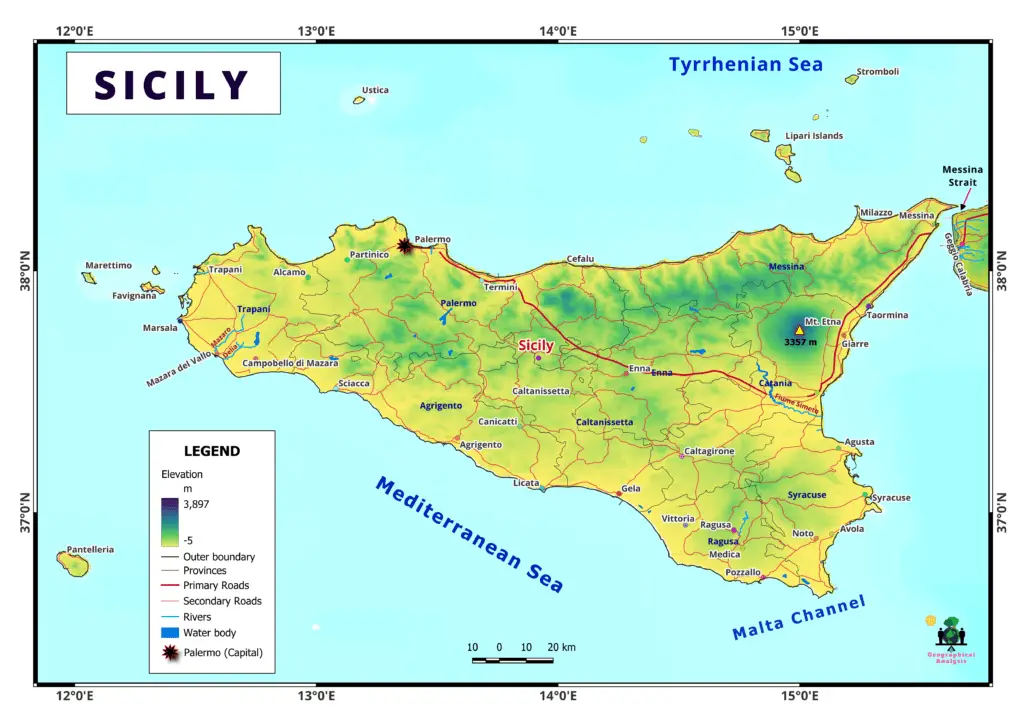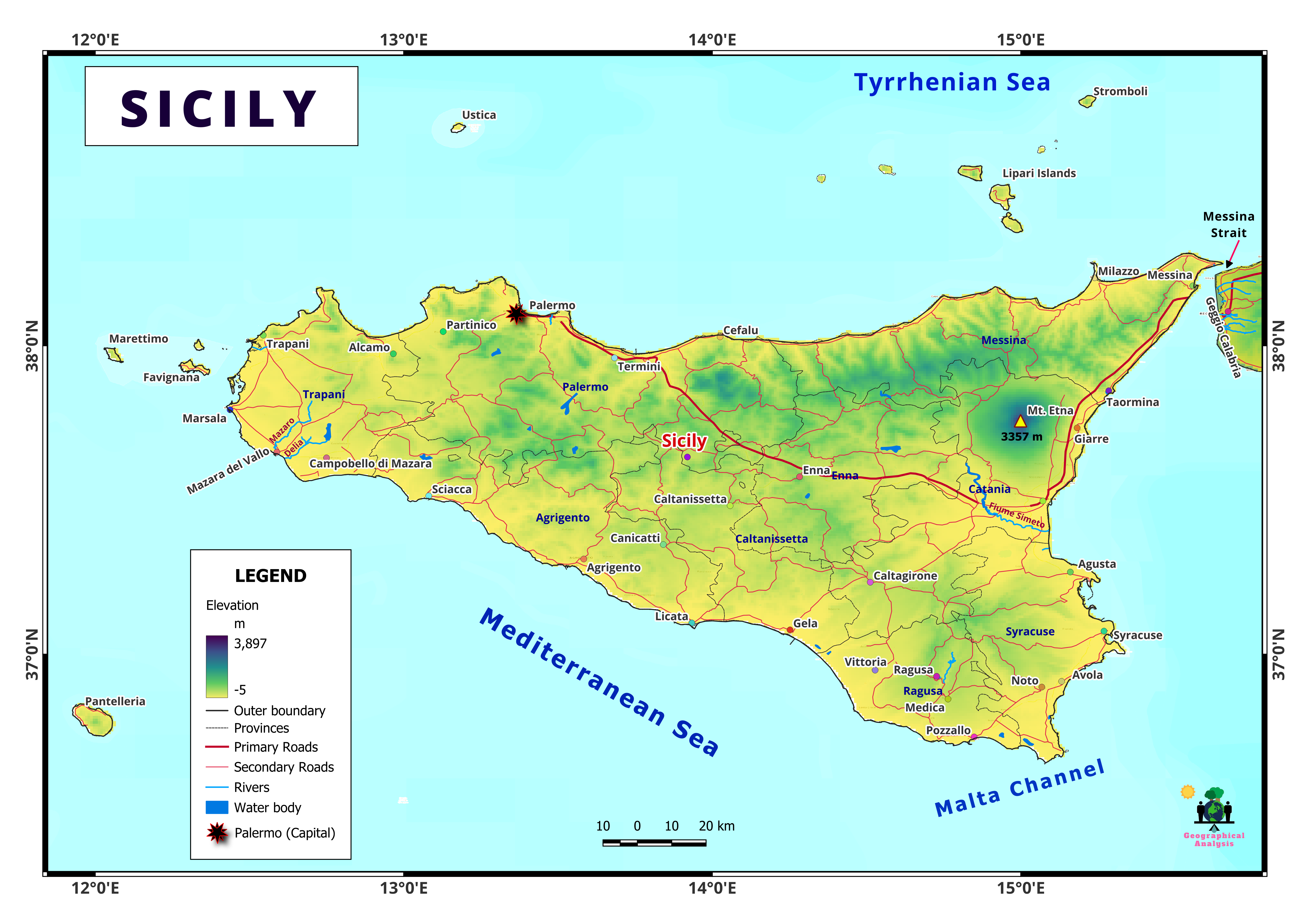Here you will find a detailed map of Sicily, Italy. There are nine provinces, each with a unique local government and administrative structure. The following names refer to the provinces of Sicily:
- Agrigento
- Caltanissetta
- Catania
- Enna
- Messina
- Palermo
- Ragusa
- Siracusa
- Trapani
If you are searching for a newly updated map of Sicily or Italy map of Sicily and map of Sicily cities, you are in right place.
Download Map of Sicily (jpg)

Download Map of Sicily (pdf)
The main administrative units in charge of local administration and services are municipalities (comuni in Italian), which are further subdivided into each province. These municipalities range from small villages to larger cities in terms of size and population.
The Sicilian Regional Assembly (Assemblea Regionale Siciliana), which has legislative authority over a number of regional issues including health, education, transportation, and tourism, is another regional government that exists in Sicily. The leader of the regional government, the president of the Sicilian Region, is in charge of advocating Sicily’s interests at the federal level.
Sicily’s administrative system is generally divided into provinces and municipalities, with an independent regional administration in charge of supervising various facets of regional governance and policy-making.
Sicily, which is situated near the southernmost point of Italy, is the largest island in the Mediterranean Sea. It is an independent territory of Italy and is renowned for its illustrious past, varied culture, breathtaking scenery, and delectable cuisine.
Geography:
Sicily is known for its diverse landscape, which includes mountains, hills, and a stunning coastline. On the eastern shore of the island stands Mount Etna, one of the most active volcanoes in the world. The Ionian Sea, Tyrrhenian Sea, and Mediterranean Sea encircle the island from the east, north, and south, respectively.
History:
Numerous civilizations, including the Greeks, Romans, Byzantines, Arabs, Normans, and Spanish, have influenced Sicily’s lengthy and intricate past. Due to its advantageous location in the Mediterranean, it has historically been a popular target for conquest. The island’s architecture, language, and culture have all undergone significant changes as a result of these numerous influences.
Cuisine and culture:
The culture of Sicily is a synthesis of several traditions. Cities like Palermo and Syracuse have a unique blend of Moorish, Norman, and Baroque architecture. The island is renowned for its lively celebrations as well, like the Infiorata flower festival in Noto and the Feast of Saint Agatha in Catania.
Mediterranean flavours are combined in the renowned, international cuisine of Sicily. Fresh seafood, produce grown nearby, pasta, olive oil, and different cheeses are frequently seen in dishes. Sicilian cuisine is known for iconic dishes like arancini (fried rice balls), caponata (sweet and sour eggplant dish), and cannoli (pastry tubes filled with sweet ricotta).
Tourism:
Due to its historical landmarks, scenic surroundings, and cultural attractions, Sicily is a well-liked tourist destination. Visitors can see historic sites, including Agrigento’s Valley of the Temples and Villa Romana del Casale’s well-preserved Roman mosaics. Sunbathers and fans of water sports flock to the coastal cities and beaches, while the interior offers chances for hiking and village exploration.
Language:
Italian and Sicilian are the two official languages of Sicily. Sicilian is a unique Romance language that has absorbed elements from a number of the historical kings and cultures that have ruled the island.
In conclusion, Sicily is an alluring location with a rich history, varied culture, stunning landscapes, and mouthwatering cuisine. Sicily has something to offer everyone, regardless of whether they are more interested in history, the natural world, or culinary pleasures.
N.B. Maps are shared only for educational purposes.
For custom map making services, contact with us at : admin@geographicalanalysis.com







